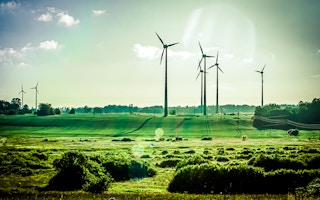2015 was a landmark year for climate action. Its many highlights were topped by a Paris agreement where 195 countries set themselves on a low-carbon path via economy-wide plans sure to be developed and strengthened every year.
To continue reading, subscribe to Eco‑Business.
There's something for everyone. We offer a range of subscription plans.
- Access our stories and receive our Insights Weekly newsletter with the free EB Member plan.
- Unlock unlimited access to our content and archive with EB Circle.
- Publish your content with EB Premium.
In the meantime, climate chaos continues to build: 2015 was the warmest year of the warmest decade since we started recording temperatures. 2016 is forecast to be even warmer. The number of climate refugees are swelling and everywhere popular movements against more pollution and irresponsibility are strengthening.
Expect the following broad trends to accentuate in 2016.
Clean energy can no longer be stopped
Notwithstanding the low price of coal and oil, solar power and other forms of clean energy will continue their onward march in 2016 and quasi-monopolize additions to electricity supply worldwide.
Order books for new clean energy power plants are up sharply in the United States, China, India, as well as in the developing economies of Africa and Latin America. India, for example, with current electricity grid capacity of less than 300 gigawatts (GW), is on its way to building 100 GW of solar power by 2022 (from 5 GW currently), double the current solar capacity of China.
Meanwhile, cheaper battery technology will continue to drive clean energy costs down, while changing the way people think about energy: We will produce more electricity from solar power, but also store and manage it ourselves. This foretells nothing short of a revolution in the way our modern society fuels itself, upending previous assumptions about the need for large fossil fuel plants connected by an expensive, inefficient electricity grid.
Renewables up, fossil fuel stocks down
The gap will begin to close between the stock market value of coal, oil and gas companies - still a massive US$5 trillion - and that of the renewable energy sector, a tiny US$300 billion.
While we are not going to get rid of fossil fuels right away, market signals are spreading, slowly but surely, to financial markets that have been mostly deaf to the increasingly strident will of the world to wean itself off fossil fuels. The capital markets will find themselves caught in a pincer movement by renewables costs that continue to drop and oil prices that continue to be volatile.
More money will be lost in fossil fuel stocks and bonds; more investors will divest; and more oil and gas exploration projects will be abandoned, forever.
More carbon markets
In 2016, new carbon markets will continue to emerge around the world.
In the US, carbon emission trading markets are the most likely mechanism that states will use to comply with the Clean Power Plan. Elsewhere, more countries will price carbon to align their actions with their Paris climate agreement commitments. Countries as varied as China, Kazakhstan, South Africa, Korea and New Zealand are opting for carbon pricing within systems tailored to suit their national circumstances.
While carbon prices worldwide remain a few years off, the signal to investors is clear: carbon pricing is accelerating, increasing the costs of fossil fuels while making renewables more and more competitive.
Global green jobs boom
Expect the green economy to continue to create jobs by the bucket load. This in turn will conquer politicians’ remaining allegiance to fossil fuel interests and infrastructure.
The solar industry, for example, is already creating eight times more jobs than the coal and natural gas industries in the United States. This advantage is even starker in developing economies like India.
Subsidy cuts are threatening solar jobs in the UK at the moment, but the sector as a whole can still thrive on private investments and will continue to create jobs in the long run.
And clean energy doesn’t only create jobs - it empowers people, especially in poorer countries where electricity is a precious commodity. In Tanzania, for example, education is being brought to students living in remote, off-the-grid locations via a fleet of mobile, solar-powered classroom trucks. In Kenya, solar-powered ovens are allowing women to literally bake their way to a better life.
Other examples abound because human ingenuity is allowing them to proliferate.
Health concerns will drive more local action
Health concerns also strengthen the dash for clean energy in many countries.
Signs of a fundamental pushback against fossil fuels on health grounds abound. China, for example, recently announced that it will stop approving new coal mines for the next three years, and cut production, because of pollution considerations. Public health is under threat in major cities ranging from Paris to Delhi to Hanoi, strengthening the imperative to electrify our car and bus fleets. In a telling sign, Toyota, the world’s largest car company, decided to end all production of petrol and diesel cars by 2050.
We are on track for a wholesale shift to electrification in the 2030s and Volkswagen’s cheating is but an example of panicked rear-guard action.
Utility-scale solar can already be had for 5 US cents per kWh, compared to gas at 5 to 8 US cents and coal at 6 to 15 US cents. When the full health impact of coal and gas is priced in, solar and wind energy (as well as other forms of clean energy) are vastly superior. So why would anyone want to build a coal-fired or a gas-fired power plant in 2016?
Tolling bells, drum fills as we march into the end of the age of oil (and gas, and coal), and the rise of the age of green energy.
Assaad Razzouk is chief executive officer, Sindicatum Sustainable Resources. This post is republished from Huffington Post with permission.









